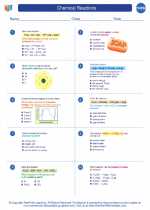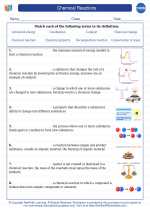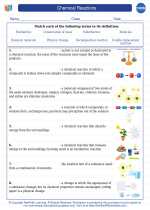Synthesis Reaction
A synthesis reaction, also known as a combination reaction, is a type of chemical reaction in which two or more simple substances combine to form a more complex product. The general form of a synthesis reaction can be represented as:
A + B → AB
Where A and B are the reactants and AB is the product. Synthesis reactions are the opposite of decomposition reactions, where a single compound breaks down into simpler substances.
Characteristics of Synthesis Reactions
1. Formation of a Single Product: In a synthesis reaction, the reactants combine to form a single product.
2. Combination of Elements: Synthesis reactions often involve the combination of elements to form a compound.
3. Energy Release: Some synthesis reactions release energy in the form of heat and light, especially when highly reactive elements are involved.
Examples of Synthesis Reactions
1. Formation of Water:
2H2 + O2 → 2H2O
2. Formation of Ammonia:
N2 + 3H2 → 2NH3
3. Formation of Magnesium Oxide:
2Mg + O2 → 2MgO
Study Guide
To understand and master synthesis reactions, consider the following study guide:
- Learn the general form of a synthesis reaction: A + B → AB
- Understand the concept of combining elements to form compounds in synthesis reactions.
- Memorize common examples of synthesis reactions, such as the formation of water, ammonia, and metal oxides.
- Practice balancing synthesis chemical equations to ensure conservation of mass.
- Identify the energy changes associated with synthesis reactions.
- Explore real-life applications of synthesis reactions in industries and everyday life.
By mastering synthesis reactions, you will gain a deeper understanding of chemical reactions and their importance in various processes.
.◂Chemistry Worksheets and Study Guides High School. Chemical Reactions

 Worksheet/Answer key
Worksheet/Answer key
 Worksheet/Answer key
Worksheet/Answer key
 Worksheet/Answer key
Worksheet/Answer key
 Worksheet/Answer key
Worksheet/Answer key
 Worksheet/Answer key
Worksheet/Answer key
 Vocabulary/Answer key
Vocabulary/Answer key
 Vocabulary/Answer key
Vocabulary/Answer key
 Vocabulary/Answer key
Vocabulary/Answer key
